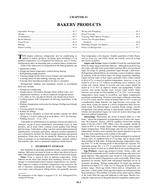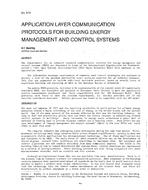The energy demands of food retail buildings account for approximately 3% of the UK’s energy consumption and resultant carbon emissions. Previous studies (Spyrou et al. 2014, Tassou et al. 2011) demonstrate that the greatest component of the electricity demand of food retail buildings is the cooling demand of the food refrigeration systems (ranging from 30 to 50%). Therefore a better understanding of the electricity demand for refrigeration would enable the development of effective energy management tools, including the evaluation of service and maintenance interventions to reduce operational electricity demand. Various methodologies have been developed and employed in the past for the quick identification of faults during the operation of commercial refrigeration systems. The focus of these methodologies has traditionally been on the temperature of food on the shop floor. The aim of this work is to enhance the existing fault-finding methodologies employed by a global multichannel retail organization, by enabling the identification of events that cause an increase in electricity demand of the refrigeration systems. This paper presents a methodology that analyzes data from refrigeration systems and enables a more straightforward identification of faults. This includes data for electricity consumption, compressor run times, percentage of refrigerant in the receiver, temperature of air on and off the evaporator, discharge and suction pressures, etc. Control strategies and maintenance schedules as well as meteorological data for each site were also collected and analyzed. Data mining methods were employed to remove known operational patterns (e.g. defrost cycles) and seasonal variations. Events that have had an effect on the electricity consumption of the system were highlighted and faults that have been identified by the existing methodology were filtered out. The resulting data set was then analyzed further to understand the events that increase the electricity demand of the systems in order to create an automatic identification method.
Citation: ASHRAE Papers: 2015 ASHRAE Annual Conference, Chicago, IL
Product Details
- Published:
- 2015
- Number of Pages:
- 8
- File Size:
- 1 file , 960 KB
- Product Code(s):
- D-CH-15-C003


